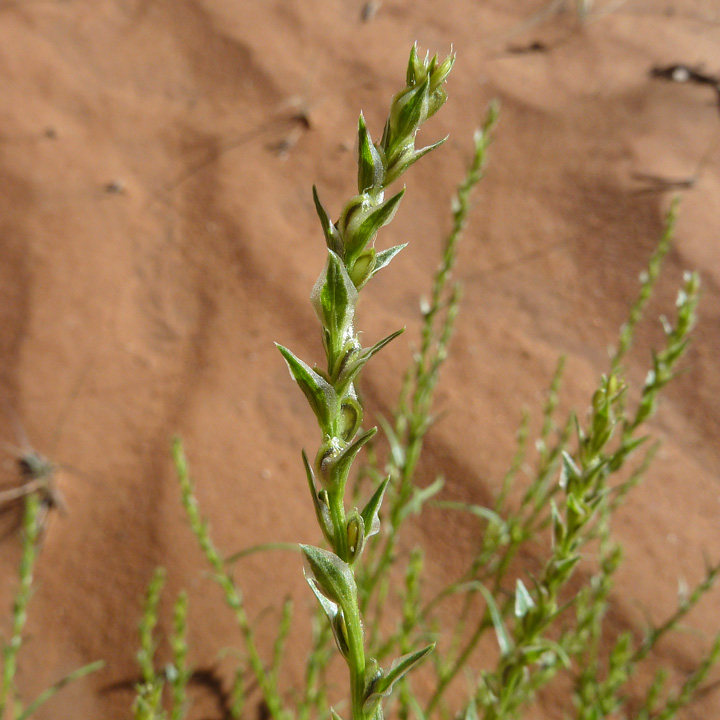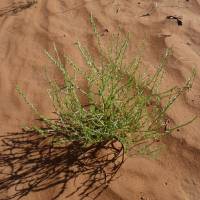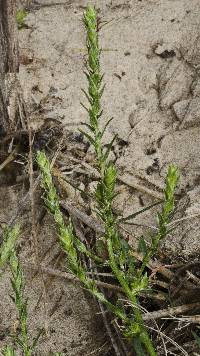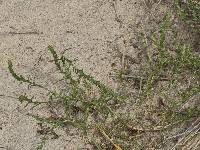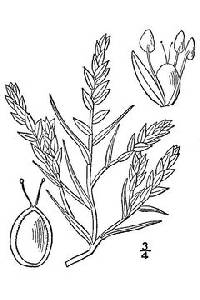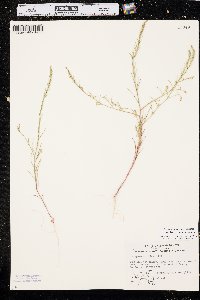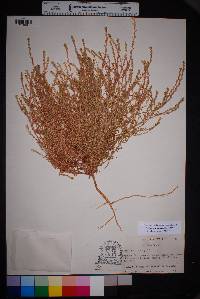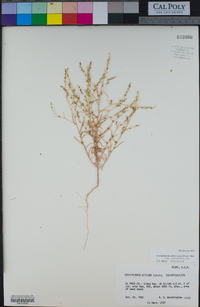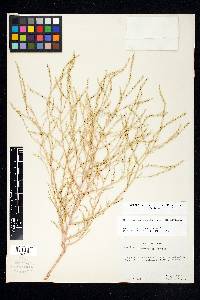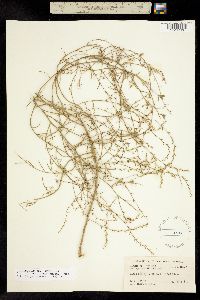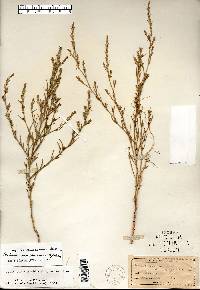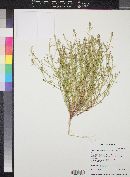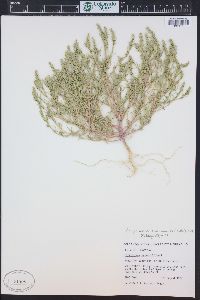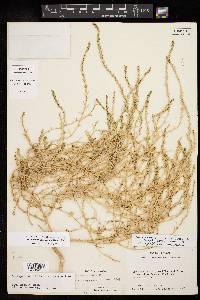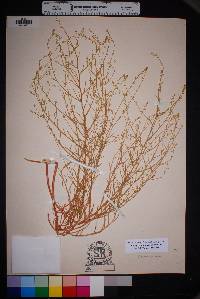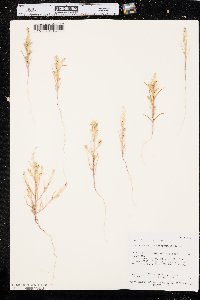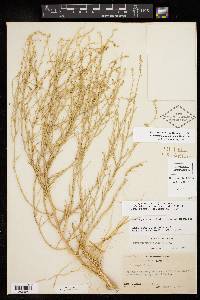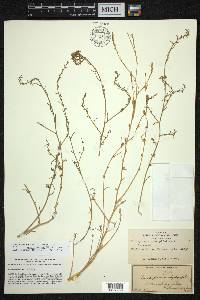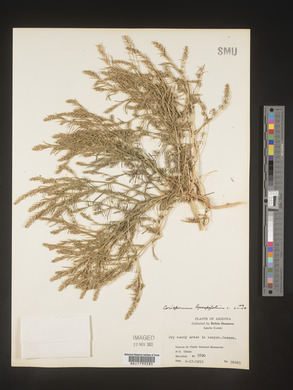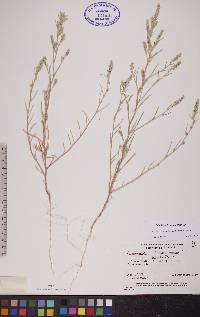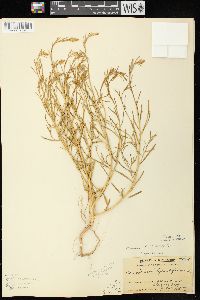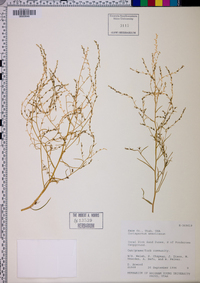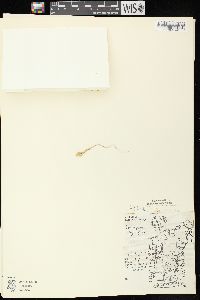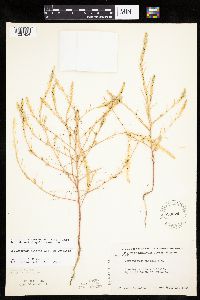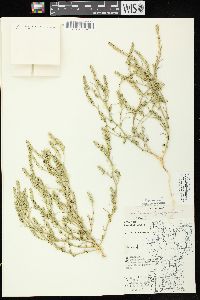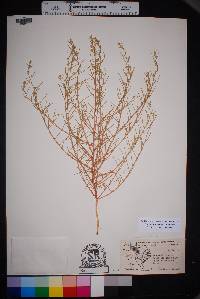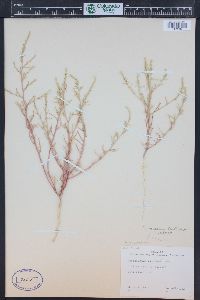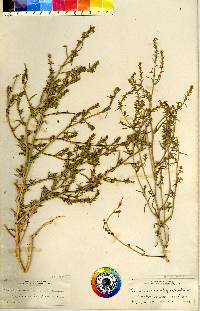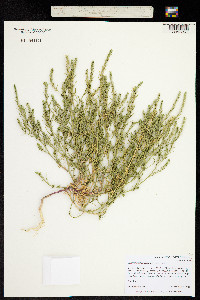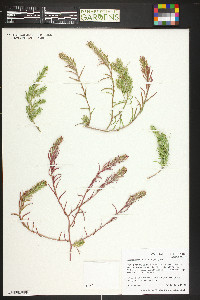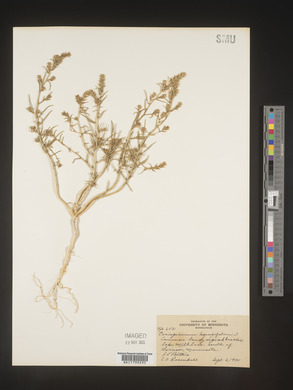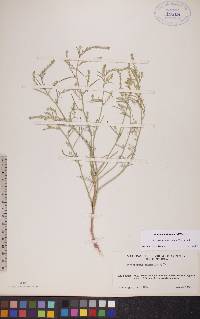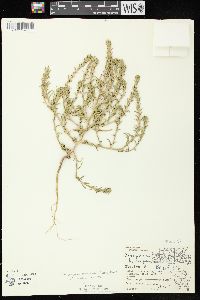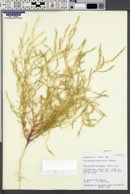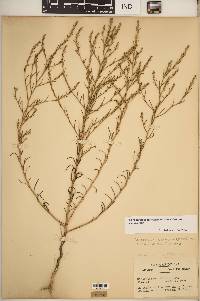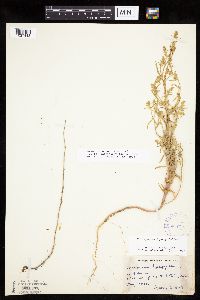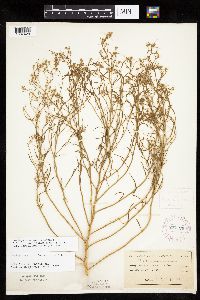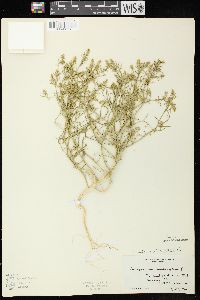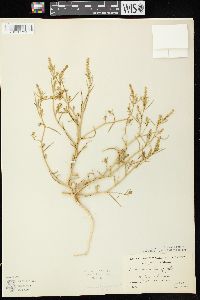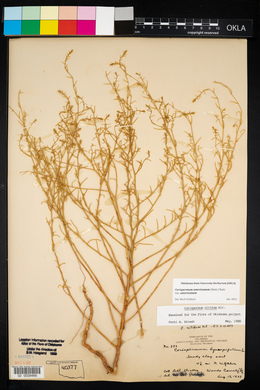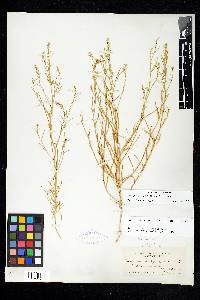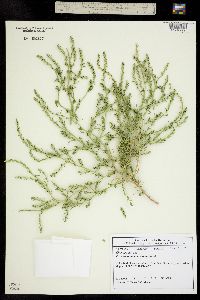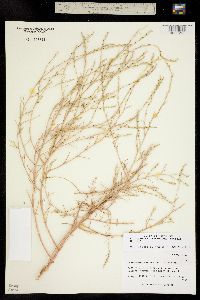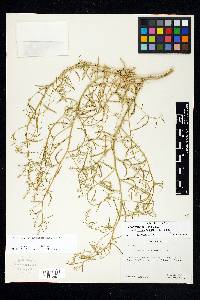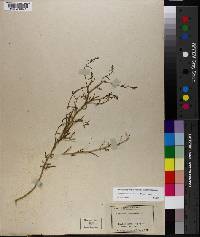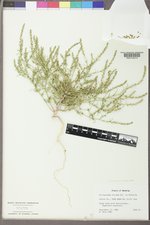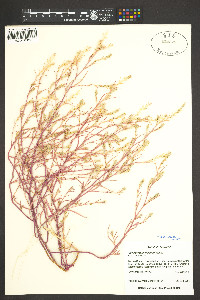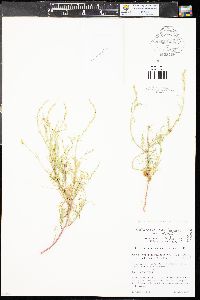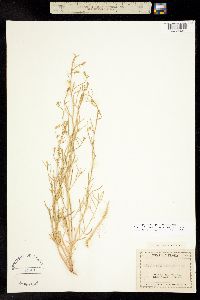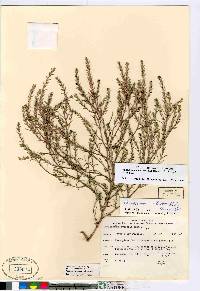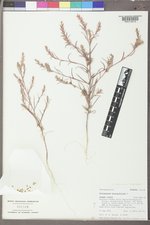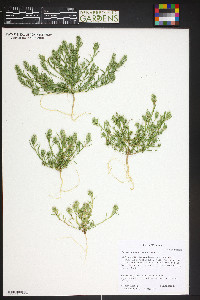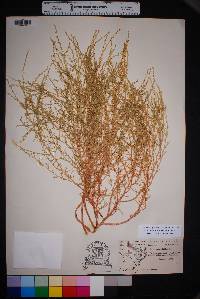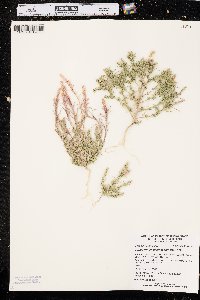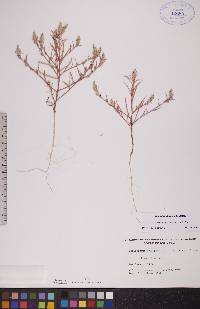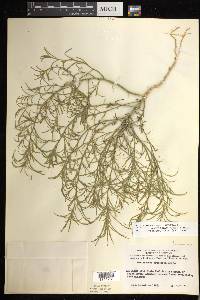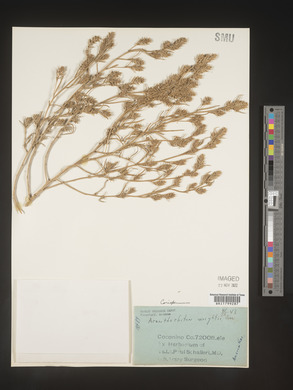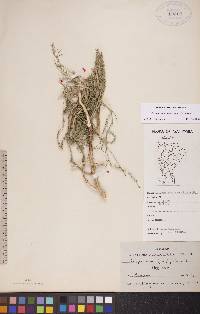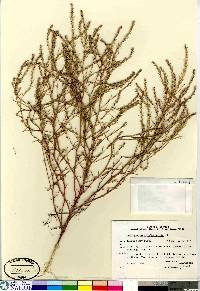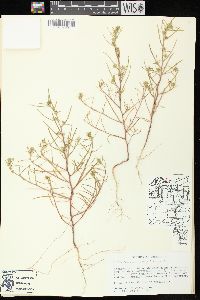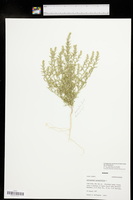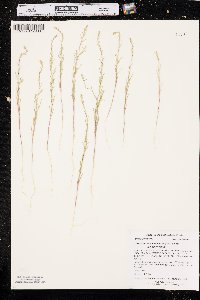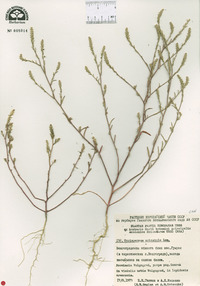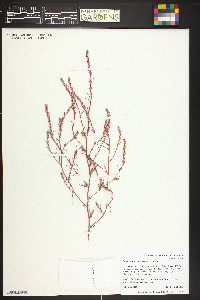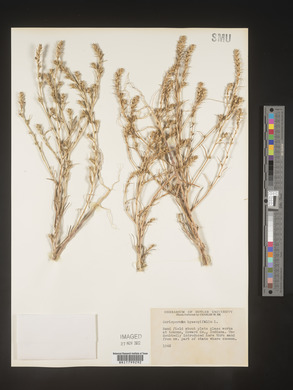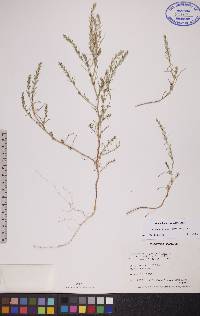
|
|
|
|
Family: Amaranthaceae
American Bugseed
[Corispermum imbricatum] |
Plants branched from or beyond base (rarely simple or with few simple branches), 10-35(-50) cm, sparsely covered with dendroid or stellate hairs, often becoming glabrous. Leaf blades linear or narrowly linear (occasionally linear-lanceolate or almost filiform), usually plane or occasionally folded (especially in dry plants), 1.5-3.5(-4) × 0.1-0.3 cm. Inflorescences usually lax, interrupted, rarely ± condensed distally, linear, narrowly linear, or occasionally narrowly clavate. Bracts ovate-lanceolate,lanceolate, linear-lanceolate, or occasionally proximal ones almost linear, much longer than distal, 0.5-2(-3.5) × (0.2-)0.3-0.7 cm. Perianth segment 1. Fruits yellowish brown, greenish brown, light brown, or brown, often with reddish brown spots and whitish warts, slightly convex abaxially, usually plane or slightly concave adaxially, obovate or obovate-elliptic, usually broadest beyond middle, (2.3-)2.5-4.5 × 2-3.5 mm, shiny or dull; wing translucent, thin, (occasionally translucent only at margin, thick), (0.15-)0.2-0.3(-0.4) mm wide, margins entire or rarely indistinctly erose, apex broadly triangular, less commonly truncate or rounded. Corispermum americanum var. americanum may also occur in British Columbia, where only immature specimens have been seen. Specimens from Oregon and Wyoming are transitional toward Corispermum villosum. The names C. hyssopifolium and C. nitidum were commonly misapplied to this native species by many authors (see also note under C. nitidum).
Annual herb 10 cm - 0.6 m tall Stem: upright or ascending, much-branched from at or near base, sparsely covered with branched (dendroid) or star-shaped (stellate) hairs, often becoming hairless with age. Leaves: alternate, stalkless, 1.5 - 6 cm long, 1 - 3 mm wide, narrowly linear to linear with a flat base and pointed tip, flat or sometimes folded. Inflorescence: a terminal, interrupted spike of flowers, 2 - 10 cm long, linear to sometimes narrowly club-shaped (clavate). Flowers: solitary in axils of leaf-like bracts, greenish, tiny, scale-like, with one sepal and no petals. Bracts 0.5 - 2 cm long, 3 - 7 mm wide, egg- lance-shaped to linear lance-shaped or sometimes linear. Stamen one, exserted. Stigmas two. Fruit: an achene, vertical, stalkless, sometimes concealed by the bracts, brownish, often spotted reddish brown, 2.5 - 4.5 mm long, 2 - 3.5 mm wide, reverse egg-shaped, broadest past the middle, slightly convex beneath, more or less flat above, whitish-warty, winged. Wing translucent, to 0.5 mm wide, thin. Similar species: No information at this time. Flowering: August to mid-October Habitat and ecology: Characteristically found on the sandy beaches of Lake Michigan. Also found in railroad yards and waste areas, but usually no more than a few miles from the lake. Occurence in the Chicago region: native Etymology: Corispermum comes from the Greek words coris, meaning bedbug, and sperma, meaning seed. Americanum means "of the Americas." Author: The Morton Arboretum From Flora of Indiana (1940) by Charles C. Deam ...... Indiana Coefficient of Conservatism: C = 3 Wetland Indicator Status: FACU Diagnostic Traits: leaves flat, midrib evident; inflorescence spicate (diameter nearly the same throughout, greater than 5 mm wide); flowers solitary in the axiles of acuminate bracts; larger fruits 1.9-2.6 mm wide, translucent-winged. |
|
|
|

